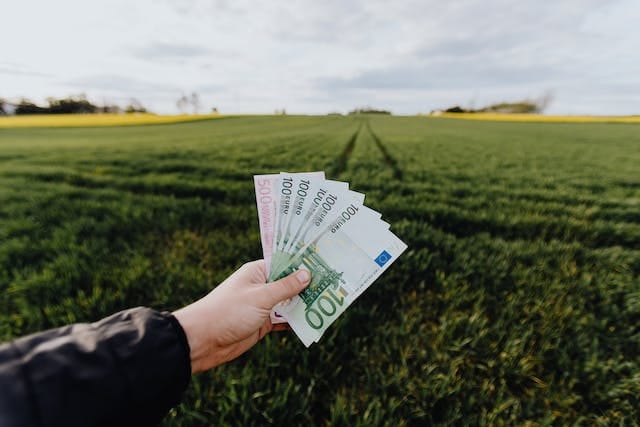Charting a Course for Post-Pandemic Resilience and Growth
Navigate post-pandemic challenges with our strategic roadmap for resilience and growth. Chart your course to success with expert insights

As a seasoned economist, I have witnessed the tumultuous impact of the COVID-19 pandemic on the global economy. In this comprehensive article, I will delve into the multifaceted aspects of the global economic recovery, shedding light on the implications of the pandemic, the strategies employed for revival, and the future trajectory of the world economy in the post-pandemic era. From fiscal policies to international trade, from GDP growth to consumer behavior, each facet of the economic landscape will be meticulously explored to provide a holistic understanding of the path towards recovery and growth.
Understanding the Global Economic Recovery
The global economic recovery is an intricate web of interconnected factors influenced by the aftermath of the unprecedented COVID-19 pandemic. Understanding the complex dynamics at play is crucial for devising effective strategies to navigate the challenges and harness the opportunities presented by the post-pandemic economic landscape. The recovery is not merely a matter of restoring the pre-pandemic status quo; it demands a strategic reorientation towards resilience and sustainable growth in a world profoundly altered by the pandemic.
The Impact of COVID-19 on the Global Economy

The outbreak of COVID-19 sent shockwaves through the global economy, disrupting supply chains, dampening consumer demand, and precipitating financial market volatility. The pandemic-induced lockdowns and restrictions inflicted severe blows to businesses across industries, leading to widespread job losses and a sharp economic downturn. As countries grappled with the public health crisis, the economic ramifications reverberated on a global scale, underscoring the interdependence of the world economy and the vulnerability to unforeseen disruptions.
Fiscal Policies and Monetary Stimulus for Economic Recovery
Governments and central banks responded to the economic fallout of the pandemic with unprecedented fiscal measures and monetary stimulus to bolster economic recovery. Massive stimulus packages, including direct payments, unemployment benefits, and business support programs, were deployed to mitigate the socio-economic impact of the crisis. Concurrently, central banks implemented aggressive monetary policies, slashing interest rates and injecting liquidity into financial markets to shore up confidence and facilitate lending.
International Trade and Economic Resilience
The resilience of the global economy hinges upon the restoration and fortification of international trade networks, which serve as the lifeblood of economic interconnectedness. The pandemic exposed the vulnerabilities of overreliance on specific trading partners and highlighted the imperative of diversifying supply chains to mitigate risks. Moreover, the revival of international trade necessitates collaborative efforts to dismantle trade barriers, enhance trade facilitation, and foster economic cooperation among nations.
GDP Growth and Unemployment Rates Post-Pandemic
The trajectory of GDP growth and unemployment rates in the post-pandemic era will be pivotal indicators of the economic recovery's efficacy. As economies emerge from the pandemic-induced recession, the focus shifts towards fostering sustainable GDP growth and alleviating unemployment through targeted policies and investment in job-creating sectors. The labor market dynamics will undergo transformation, necessitating reskilling and upskilling initiatives to realign the workforce with evolving industry demands.
Government Interventions and Economic Reforms
Government interventions and economic reforms play a pivotal role in steering the economy towards recovery and resilience. Structural reforms aimed at enhancing business competitiveness, streamlining regulatory frameworks, and fostering innovation are imperative for fostering a conducive environment for economic revival. Additionally, investments in infrastructure, healthcare, and education are instrumental in fortifying the economy's foundations and fostering long-term prosperity.
Global Supply Chains and Resilience Strategies

The pandemic-induced disruptions exposed the fragility of global supply chains, prompting a paradigm shift towards building resilient and adaptable supply chain networks. Diversification of sourcing, localization of production, and adoption of advanced technologies such as blockchain and AI are pivotal in fortifying supply chains against future disruptions. Collaboration among stakeholders, including suppliers, manufacturers, and logistics providers, is essential for co-creating agile and robust supply chain ecosystems.
Public Health Impact on Economic Recovery
The interplay between public health and economic recovery is symbiotic, as a robust public health infrastructure is indispensable for sustaining economic activity and fostering consumer confidence. Vaccination drives, healthcare infrastructure investment, and pandemic preparedness measures are essential components of the public health response that underpins economic resurgence. Furthermore, the convergence of public health and economic policies is imperative for charting a sustainable path towards post-pandemic resilience and growth.
Inflation Control and Market Stabilization
As economies rebound from the pandemic-induced downturn, the specter of inflation looms large, necessitating vigilant measures to control inflationary pressures and stabilize markets. Central banks play a pivotal role in maintaining price stability and market equilibrium through judicious monetary policies and effective communication. Balancing the imperative of stimulating economic activity with the need to avert runaway inflation is a delicate task that demands astute policy calibration.
Recovery Models and Digital Transformation
The post-pandemic economic landscape calls for innovative recovery models and a robust digital transformation agenda to navigate the evolving business environment. Digitalization, automation, and the adoption of emerging technologies are pivotal for enhancing business agility, operational efficiency, and customer engagement. The convergence of physical and digital realms in business models necessitates a paradigm shift in organizational strategies and a proactive approach towards embracing digital innovation.
Consumer Behavior in the Post-Pandemic Economy
The recalibration of consumer behavior in the wake of the pandemic has profound implications for businesses and industries, necessitating a nuanced understanding of evolving consumer preferences and priorities. From the rise of e-commerce to the prioritization of health and sustainability, the post-pandemic consumer landscape is marked by discernible shifts that necessitate agile business strategies and customer-centric approaches. Anticipating and adapting to these shifts is imperative for businesses to thrive in the post-pandemic economy.
International Cooperation for Global Economic Recovery
The magnitude of the global economic recovery necessitates robust international cooperation and collaboration to address cross-border challenges and harness collective opportunities. Multilateral institutions, diplomatic channels, and trade agreements serve as conduits for fostering international cooperation and coordination in charting a path towards sustained economic recovery. The imperative of solidarity and shared responsibility underscores the interconnectedness of the global economy and the imperative of concerted action.
Charting a Course for Post-Pandemic Resilience and Growth
In conclusion, the global economic recovery is a complex and multifaceted endeavor that demands strategic foresight, collaborative action, and adaptive resilience. The post-pandemic economic landscape presents myriad challenges and opportunities, and navigating this terrain requires a holistic approach encompassing fiscal policies, trade dynamics, public health imperatives, and digital transformation. As we chart a course for post-pandemic resilience and growth, the imperative of fostering a sustainable and inclusive economic resurgence resonates as a beacon guiding our collective efforts towards a prosperous and resilient future.
The road to global economic recovery is paved with challenges and opportunities. As we navigate the post-pandemic landscape, it is imperative for policymakers, businesses, and individuals to collaborate and innovate in charting a course for resilience and growth. Let us harness the lessons learned from the pandemic and forge a path towards a more resilient, sustainable, and inclusive global economy




